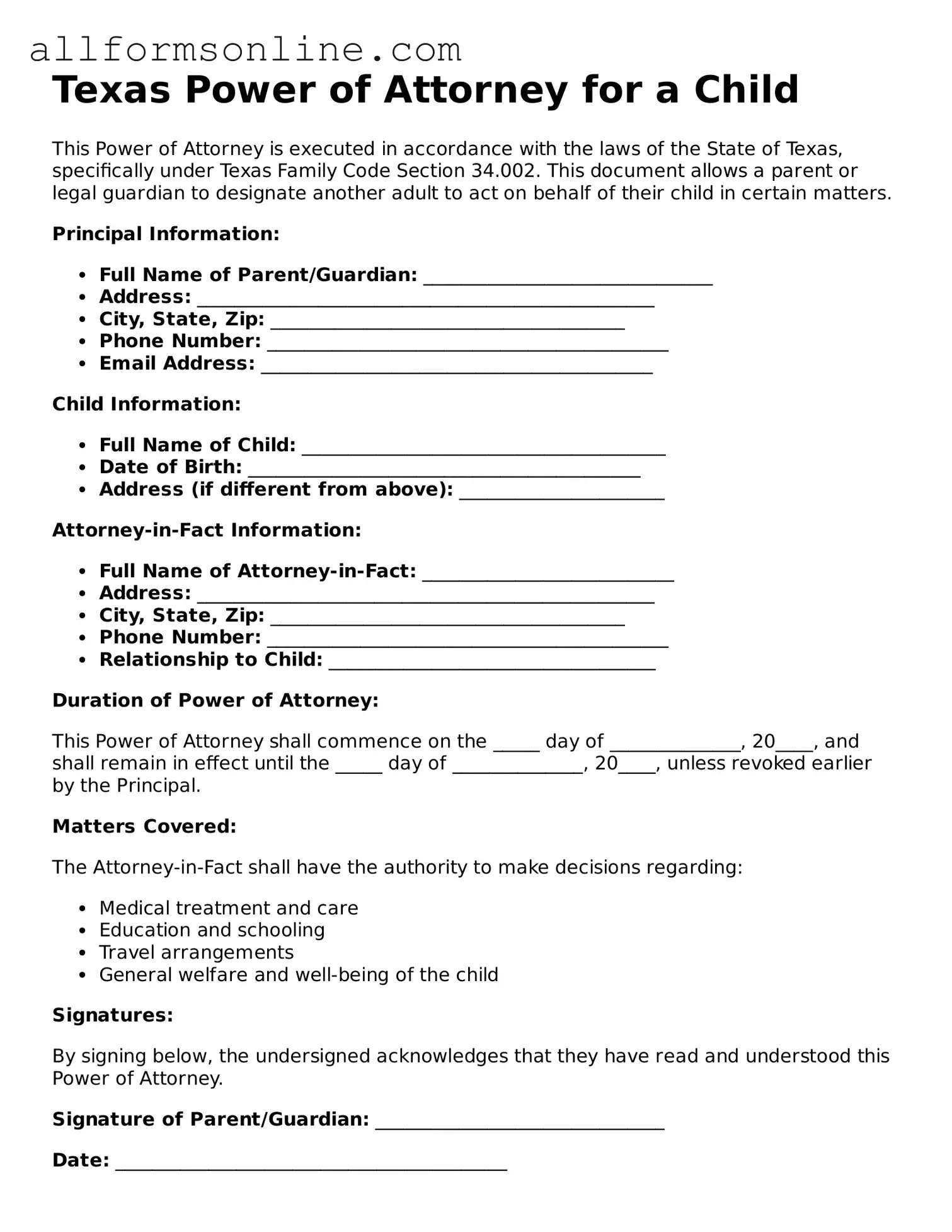What is a Texas Power of Attorney for a Child?
The Texas Power of Attorney for a Child is a legal document that allows a parent or legal guardian to grant authority to another adult to make decisions on behalf of their child. This can include decisions related to education, healthcare, and general welfare. The document is particularly useful when a parent is unable to care for their child temporarily, such as during travel or extended absences.
Who can serve as an agent under this Power of Attorney?
Any adult can be appointed as an agent in the Power of Attorney for a Child. This may include relatives, family friends, or trusted individuals. It is essential to choose someone who is responsible and capable of making decisions in the best interest of the child.
How long is the Power of Attorney effective?
The Power of Attorney for a Child remains effective until the specified expiration date in the document or until the parent or guardian revokes it. If no expiration date is stated, the authority typically lasts until the child reaches the age of 18, unless terminated earlier by the parent or guardian.
Do I need to have the Power of Attorney notarized?
Yes, the Power of Attorney for a Child must be signed in the presence of a notary public to be legally valid. Notarization helps ensure that the document is recognized by schools, medical facilities, and other entities that may need to verify the authority of the agent.
Can I revoke the Power of Attorney once it is in effect?
Yes, a parent or legal guardian can revoke the Power of Attorney at any time. This can be done by providing a written notice of revocation to the agent and any relevant third parties. It is advisable to also notify the notary public who notarized the original document.
What decisions can the agent make on behalf of the child?
The agent may make various decisions regarding the child's education, healthcare, and general welfare. This includes enrolling the child in school, consenting to medical treatment, and making day-to-day decisions. However, the extent of authority can be limited based on the preferences outlined in the Power of Attorney document.
Is there a specific format for the Power of Attorney for a Child in Texas?
While there is no mandated form, it is advisable to use a standard template that complies with Texas laws. Many legal resources and organizations provide templates that include the necessary elements to ensure the document is valid and enforceable.
What should I do if the agent is unable or unwilling to fulfill their duties?
If the appointed agent cannot or does not wish to act, the parent or guardian should consider appointing a new agent. This can be done by creating a new Power of Attorney document or by amending the existing one, ensuring that all parties are informed of the change.
